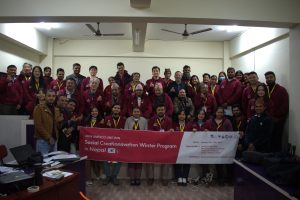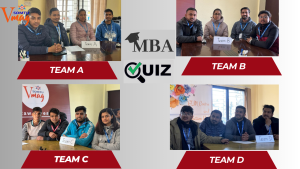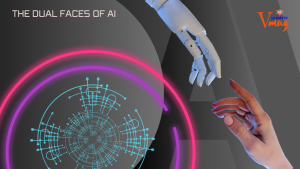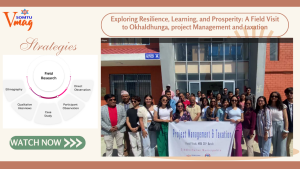The Dual Faces of AI: Empowerment or Extermination for University Students?
“The pace of progress in artificial intelligence (I’m not referring to narrow AI) is incredibly…

“The pace of progress in artificial intelligence (I’m not referring to narrow AI) is incredibly fast. Unless you have direct exposure to groups like Deepmind, you have no idea how fast—it is growing at a pace close to exponential. The risk of something seriously dangerous happening is in the five-year time frame. 10 years at most.” —Elon Musk wrote in a comment on Edge.org
Just a month ago, I found myself in the midst of evaluating internship reports submitted by my students. It’s a task that always challenges the true essence of assessment, leaving me thoughtful whether the paragraphs, the intricacies, were genuinely crafted by the students themselves or assisted by AI. It became a paradox trying to discern between passages that seemed purely human, those that appeared AI-generated, or a hybrid of human-written content corrected by AI. Despite this uncertainty, I managed to identify the sections seemingly produced by AI and advised the students to infuse their reports with their own genuine internship experiences.
This left me both amazed and concerned. It’s confusing to witness students resorting to shortcuts facilitated by AI for convenience, potentially diluting the authenticity and value of their own experiences. It’s worrying because, in the pursuit of ease, they might unintentionally undercut their own growth and development.
At this point I recall the proverb by Claude Shannon, ‘I visualize a time when we will be to robots what dogs are to humans, and I’m rooting for the machines.
Yes, I couldn’t shake off the wonder and worry about why students are increasingly opting for these shortcuts. Is it the attraction of quick completion, the ease of generating content, or perhaps a lack of confidence in their own capabilities?
The pervasive use of AI tools hazes the boundaries between original work and AI-assisted content, prompting significant inquiries into the integrity of academic endeavors and the core essence of learning. This poses a formidable challenge to education, as it jeopardizes the cultivation of essential student abilities like critical thinking, creativity, communication skills, and decision-making capabilities.
For example, in learning ‘citation and referencing styles’, students often turn to AI for assistance, neglecting the opportunity to learn these skills manually first. By relying solely on AI for citation, referencing, and manuscript formatting, students prioritize the end result over genuine learning. This approach prevents them from truly comprehending the working details of citation and referencing conventions. The use of AI tools in these tasks can create a gap in genuine understanding. Students may miss the chance to internalize the essence of citation styles, making it challenging for them to detect potential errors or mentor others in this area.
This reliance on AI for completion rather than comprehension limits their ability to fully engage with the material, inhibiting a deeper understanding of the subject matter. Limiting one selves to AI might only become evident in the future when students realize the importance of understanding these fundamental skills for their academic and professional growth. This self-awareness is vital for students to navigate towards a more illuminating path of genuine learning rather than settling in the shadows of incomplete understanding.
The increasing reliance on AI tools for academic tasks raises fundamental concerns about the authentic development of students. When shortcuts provided by technology replace the authentic process of gathering experiences, analyzing information, and expressing oneself, the foundational pillars of education—critical thinking and creativity—are at risk of being undermined.
As an educator, I am not denying the use of AI especially by university students, essentially I encourage and guide students towards embracing the richness of their own experiences, fostering genuine learning, critical thinking, and skill development. While AI can be a valuable aid, it should complement rather than replace the essence of individual effort and authentic expression. The challenge lies in striking a balance between leveraging technology for assistance and nurturing students’ ability to harness their unique experiences and insights.
Students should harness AI to amplify their creativity rather than allowing it to replace their originality and creativity. AI serves as a catalyst for exploring curiosity, enhancing learning capabilities, personalizing education, and saving valuable time in the pursuit of competitiveness. It fosters collaboration and offers a leap forward, urging students to differentiate when its application enhances their endeavors and when it’s best to rely on their own. Relying entirely on AI for their work is both unethical and detrimental on multiple levels beyond what we realize. While these tools aid works, they’re unable to substitute the complexities of the human brain. However, they do provoke a reconsideration of our future landscape.
This sparked a deeper reflection on the evolving landscape of education, prompting considerations about how to navigate the fine line between technological convenience and preserving the essence of genuine learning, creativity, curiosity and personal growth. Ultimately, it’s about empowering students to embrace the richness of their own journeys and contribute authentically to their academic pursuits and professional beyond.
Gangaram Biswakarma, PhD
Editor-in-Chief





🤩🤩🤩